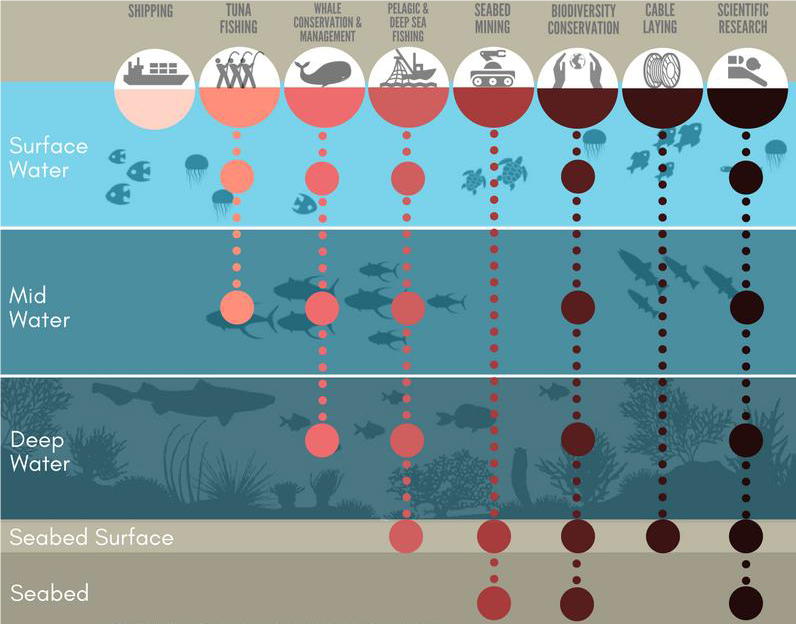- Quick links
- Interactive Governance Diagram
- Interactive Map
Human Activities in ABNJ
The number of human activities currently ongoing in marine ABNJ is limited, though the footprint and intensity of the existing activities is likely to increase (and new activities may start taking place) in future.
Current human activities in marine ABNJ are:
 Shipping (associated with a range of activities or sectors: transportation, fishing, transit, tourism and leisure, research, law enforcement, military …)
Shipping (associated with a range of activities or sectors: transportation, fishing, transit, tourism and leisure, research, law enforcement, military …)
 Fishing (targeting species in the water column, such as tuna, and species on or near the seabed, such as orange roughy)
Fishing (targeting species in the water column, such as tuna, and species on or near the seabed, such as orange roughy)
 Seabed mining (this encompasses ongoing exploitation of fossil fuels as well as increasing interest in future exploitation of rare earths and minerals on and in the seabed)
Seabed mining (this encompasses ongoing exploitation of fossil fuels as well as increasing interest in future exploitation of rare earths and minerals on and in the seabed)
 Cable laying
Cable laying
 Scientific Research
Scientific Research
There are efforts to regulate and manage these activities for the purpose of environmental protection. Conservation is therefore often referred to as another current activity in marine ABNJ.
Each of the existing activities in marine ABNJ is governed by its own institutions and regulations, some of which operate or apply globally, while others operate or apply within specific geographic regions. The management of ABNJ fisheries is further split by target species. In ABNJ conservation, separate rules and institutions apply to the protection of whales, the protection of fish stocks, and the protection of wider biodiversity. This means that, despite the relatively small number of ongoing activities, the marine ABNJ governance landscape is relatively complex.
For information on the institutions and regulations involved, you can explore our interactive ABNJ governance diagram.
If you’re interested in the geographical distribution and intensity of ongoing or planned activities in ABNJ, you can find links to a range of relevant information repositories and spatial data sources here.
